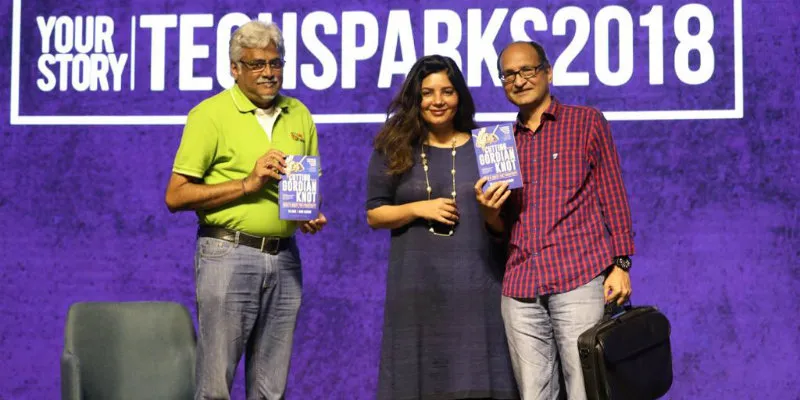Balancing India and Bharat: 'Cutting the Gordian Knot' explains how
India is a country with multiple realities, and one of them is the disconnect between India and Bharat.
For those familiar with history, the term Bharat was often used to describe that part of the country, and her people, that were left behind in the journey of economic development.
‘India’ and ‘Bharat’ are the two participants in a three-legged race, and like any three-legged race, one can’t win if the other is unable to keep pace. We are currently at a point in time when India is ready to race ahead, but Bharat seems to have unending woes. Worse, Bharat’s problems permeating into India, slowing it down. The interdependence between India and Bharat has only grown with progress.

Authors Hari Menon, the co-founder of BigBasket and T.N. Hari, head of human resources at BigBasket, in their latest book 'Cutting the Gordian Knot: India's Quest for Prosperity' emphasise that Bharat’s problems are ‘wicked’ – not amenable to free market-based solutions, have numerous interdependencies, a variety of stakeholders with conflicting interests, and are hopelessly intertwined. There are many components of this enormously complex quest for prosperity.
The authors have brought together some truly amazing contributors who have worked in the trenches on these different components.
In the book, the authors submit that India has an education system that has created millions of degree holders, fuelling a misplaced aspiration for white-collared jobs that don’t exist in the numbers needed to absorb everyone that enters the employable age. With more than 12 million youth reaching employable age every year, we need to think out of the box. The authors say India got educated before it got skilled, and as a result, India is able to send a mission to Mars, but is unable to build roads that can withstand a monsoon.
Skilling and vocationalisation of education is the need of the hour. Vocational universities run very differently from conventional universities and here, students spend 70 percent of their time in the industry, and 30 percent on campus. Such institutes are needed in large numbers.
Micro, small and medium enterprises will be job creators of the future, the authors say. Skilling, along with micro-entrepreneurship, needs to be rejuvenated and private enterprises (both for-profit and not-for-profit) need to work collaboratively with the government and leverage its reach to create a scalable impact.
The farm sector needs a rethink in terms of improving productivity by leveraging new technologies and introducing the right reforms. Migration from rural to urban areas will remain a continuous process, and this migration must be eased by creating urban settlements that can absorb the migrating population seamlessly.
India cannot progress unless there is a strong push to enhance the gender mix in the workforce in favour of women. The biggest difference between China and India is the difference in the number of working women, and what is required to bridge the gap is the creation of safe work places and safe cities, besides a broader transformation in the cultural outlook.
Rapid developments in technology are changing the nature of jobs, and also employment. The IT sector, which was the biggest and most well paying job creation engine over the last few decades, has now pretty much hit a plateau when it comes to net job creation.
Jobs are available at the bottom of the pyramid, and at the top. Hari Menon and T.N. Hari say we are living in truly interesting times - India’s youth bulge makes it one of the youngest nations in the world and a youthful demographic profile is a necessary, but not a sufficient condition for economic growth.
India has a long way to go, they say. New ways will have to be found, and dominant narratives will have to be challenged. The book points out that we are at a point in history where there is a confluence of several factors conducive for driving change - there is a burning problem at hand, which makes it easier to introduce change; the government has a majority to confidently be able to take decisions; and the prime minister is determined to bring about change.
The book offers views, data, and insights; and with it, it aims to spark dialogue, awareness and eventually, change. The authors and contributors have succeeded in taking a serious topic, and making it insightful and exciting so that everyone from a college student, to a corporate executive to an academic find it interesting and stirring.







